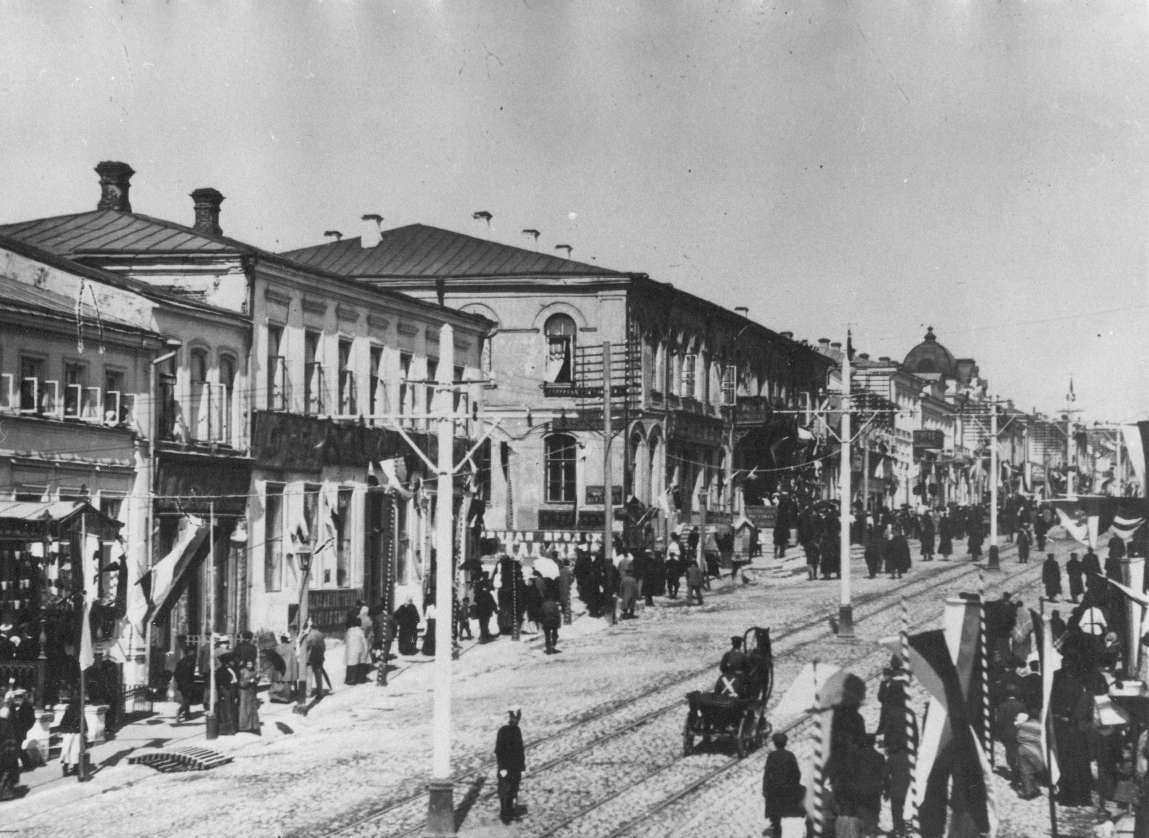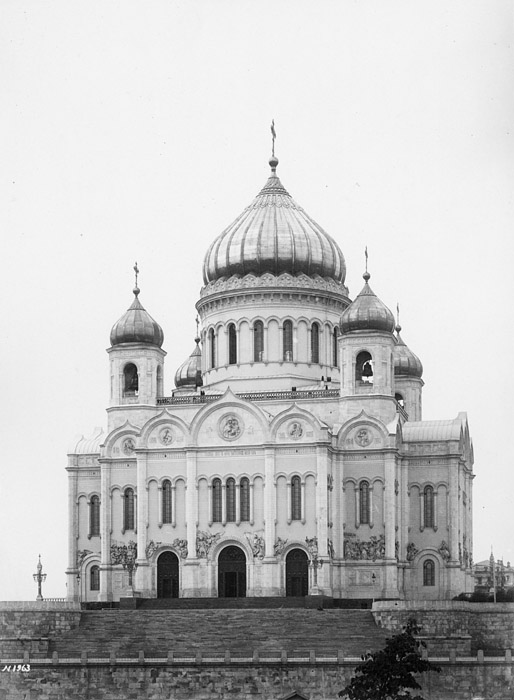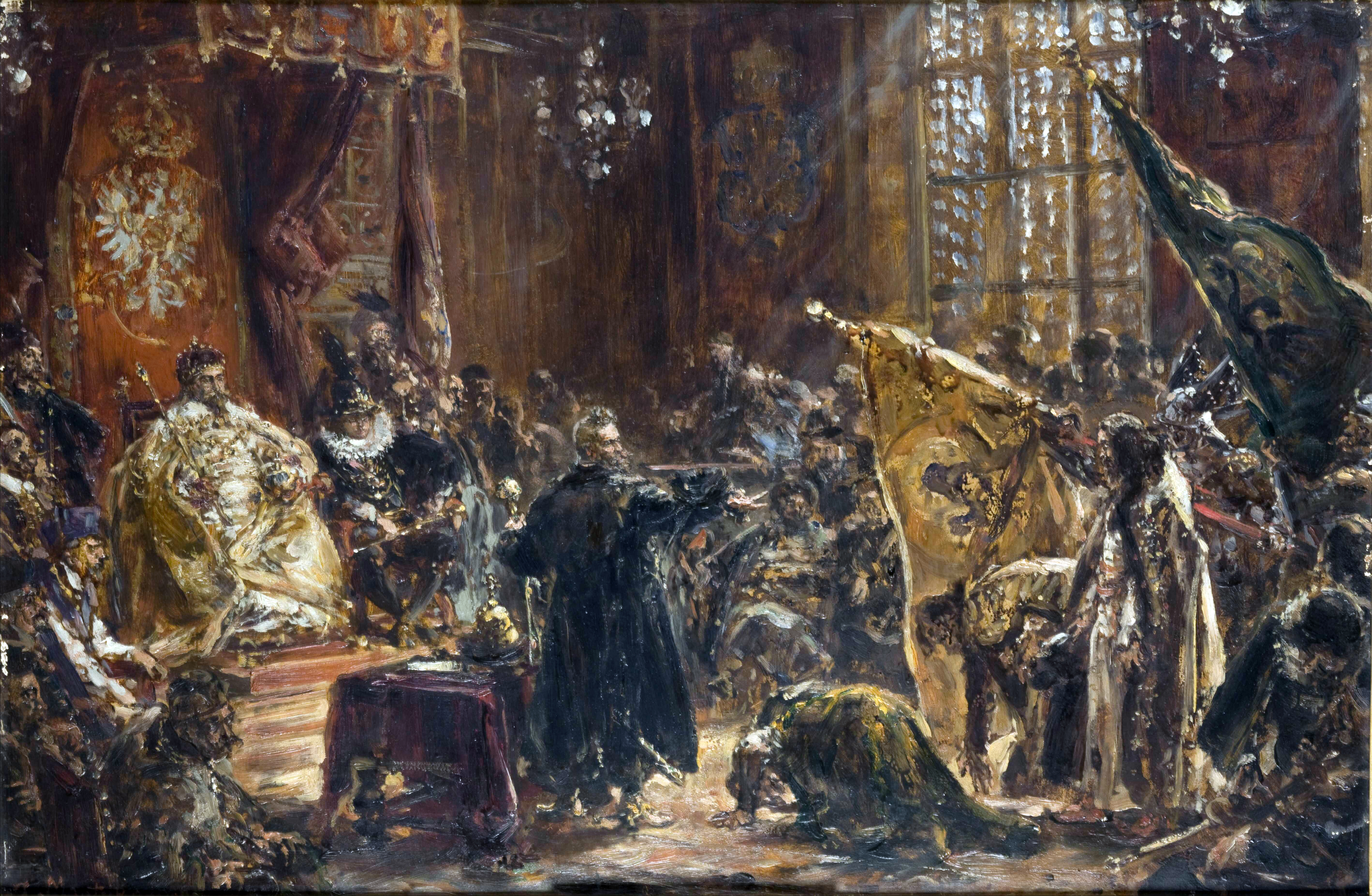|
Bolkhov
Bolkhov () is a town and the administrative center of Bolkhovsky District in Oryol Oblast, Russia, located on the Nugr River ( Oka's tributary), from Oryol, the administrative center of the oblast. Population: 12,800 (1969); 20,703 (1897). History Bolkhov was first documented in a chronicle from 1196.Official website of Bolkhovsky DistrictУездный город Болхов After the Mongol invasion of Rus', it became the seat of a local princely dynasty, whose descendants may be traced until the 19th century. In the 16th century, it became one of the fortified posts for defending Moscow from the Tatars on the south. It was there that the army of Vasily IV was defeated by False Dmitry II in 1608. During World War II, Bolkhov was occupied by the German Army from October 9, 1941 to July 28, 1943. Administrative and municipal status Within the framework of administrative divisions, Bolkhov serves as the administrative center of Bolkhovsky District.Law # ... [...More Info...] [...Related Items...] OR: [Wikipedia] [Google] [Baidu] |
Bolkhovsky District
Bolkhovsky District () is an administrativeLaw #522-OZ and municipalLaw #464-OZ district (raion), one of the twenty-four in Oryol Oblast, Russia. It is located in the north of the oblast. The area of the district is . Its administrative center is the town of Bolkhov. Population: 18,041 ( 2010 Census); The population of Bolkhov accounts for 63.3% of the district's total population. Notable residents *Yevgeni Preobrazhensky Yevgeni Alekseyevich Preobrazhensky ( rus, Евге́ний Алексе́евич Преображе́нский, p=jɪvˈɡʲenʲɪj ɐlʲɪkˈsʲejɪvʲɪtɕ prʲɪəbrɐˈʐɛnskʲɪj; – 13 February 1937) was a Russian revolutionary, Soviet ... (1886–1937), revolutionary, economist and sociologist, born in Bolkhov * Ilya Starinov (1900–2000), military officer, noted Soviet saboteur, born in the village of Voynovo References Notes Sources * * {{Use mdy dates, date=October 2012 Districts of Oryol Oblast ... [...More Info...] [...Related Items...] OR: [Wikipedia] [Google] [Baidu] |
Oryol Oblast
Oryol Oblast (), also known as Orlovshchina (), is a federal subjects of Russia, federal subject of Russia (an oblast). Its administrative center is the types of inhabited localities in Russia, city of Oryol. Population: Geography It is located in the southwestern part of the Central Federal District, in the Central Russian Upland. In terms of area, at it is one of the smallest federal subjects. From north to south, it extends for more than , and from west to east—for over . It borders Kaluga Oblast to the north-west, Tula Oblast to the north, Lipetsk Oblast to the east, Kursk Oblast to the south, and Bryansk Oblast to the west. There are of black earth soils (chernozems) in the oblast, which amounts to three-quarters of the world chernozem reserves. Climate The climate is temperate (Köppen climate classification, Köppen: Humid continental climate#Warm summer subtype, ''Dfb''). The winter is moderately cold, with an average January temperature from . Summers are w ... [...More Info...] [...Related Items...] OR: [Wikipedia] [Google] [Baidu] |
False Dmitry II
False Dmitry II (; died ), historically known as Pseudo-Demetrius II and also called ("the thief of Tushino"), was the second of three pretenders to the Russian throne who claimed to be Tsarevich Dmitry Ivanovich, the youngest son of Ivan the Terrible, during the Time of Troubles. The real Dmitry had died under uncertain circumstances, most likely an assassination in 1591 at the age of nine at his widowed mother's appanage residence in Uglich. The second False Dmitry first appeared on the scene around 20 July 1607, at Starodub. He is believed to have been either a priest's son or a converted Jew, and was relatively highly educated for the time. He spoke both the Russian and Polish languages and was something of an expert in liturgical matters. He pretended at first to be the Muscovite boyar Nagoy, but falsely confessed under torture that he was Tsarevich Dmitry, whereupon he was taken at his word and joined by thousands of Cossacks, Poles, and Muscovites. Dunning states, "Acc ... [...More Info...] [...Related Items...] OR: [Wikipedia] [Google] [Baidu] |
Oryol
Oryol ( rus, Орёл, , ɐˈrʲɵl, a=ru-Орёл.ogg, links=y, ), also transliterated as Orel or Oriol, is a Classification of inhabited localities in Russia, city and the administrative center of Oryol Oblast, Russia, situated on the Oka River, approximately south-southwest of Moscow. It is part of the Central Federal District, as well as the Central Economic Region. First founded as a medieval stronghold of the Principality of Chernigov, Oryol was part of Grand Duchy of Lithuania, Lithuania in the Late Middle Ages, late medieval period, and then Russia since the early modern period. It has served as the seat of regional administration since 1778. The city is particularly known for the infamous Oryol Prison, former prison for political and war prisoners of Russian Empire, Tsarist Russia, the Soviet Union and Nazi Germany. History Early history While there are no historical records, archaeological evidence shows that a fortress settlement existed between the Oka River and ... [...More Info...] [...Related Items...] OR: [Wikipedia] [Google] [Baidu] |
Tatars
Tatars ( )Tatar in the Collins English Dictionary are a group of Turkic peoples across Eastern Europe and Northern Asia who bear the name "Tatar (term), Tatar". Initially, the ethnonym ''Tatar'' possibly referred to the Tatar confederation. That confederation was eventually incorporated into the Mongol Empire when Genghis Khan unified the various steppe tribes. Historically, the term ''Tatars'' (or ''Tartars'') was Endonym and exonym, applied to anyone originating from the vast North Asia, Northern and Central Asian landmass then known as Tartary, a term which was also conflated with the Mongol Empire itself. More recently, however, the term has come to refer more narrowly to related ethnic groups who refer to themselves as ''Tatars'' or who speak languages that are commonly referr ... [...More Info...] [...Related Items...] OR: [Wikipedia] [Google] [Baidu] |
Konstantin Thon
Konstantin Andreyevich Thon or Ton (; October 26, 1794 – January 25, 1881) was a Russian architect who was one of the most notable architects during the reign Nicholas I. His major works include the Cathedral of Christ the Saviour, the Grand Kremlin Palace and the Kremlin Armoury in Moscow. Early life Konstantin, born in St. Petersburg to the family of a German jeweller, was one of three Thon brothers who all rose to become notable architects. He studied at the Imperial Academy of Arts (1803–15) under the Empire Style architect Andrey Voronikhin, best remembered for his work on the Kazan Cathedral, situated right in the middle of the Nevsky Prospekt. He studied Italian art in Rome from 1819 to 1828, and on his return home was admitted to the academy as its member (1830) and professor (1833). In 1854, he was appointed rector of the architectural division of the academy. Thon first attracted public attention with his sumptuous design for the interiors of the Academy ... [...More Info...] [...Related Items...] OR: [Wikipedia] [Google] [Baidu] |
Town Of District Significance
Town of district significance is an administrative division of a district in a federal subject of Russia. It is equal in status to a selsoviet or an urban-type settlement of district significance, but is organized around a town (as opposed to a rural locality or an urban-type settlement); often with surrounding rural territories. Background Prior to the adoption of the 1993 Constitution of Russia, this type of administrative division was defined on the whole territory of the Russian SFSR as an inhabited locality which serves as a cultural and an industrial center of a district and has a population of at least 12,000, of which at least 80% are workers, public servants, and the members of their families.Иванец Г.И., Калинский И.В., Червонюк В.И. Конституционное право России: энциклопедический словарь / Под общей ред. В.И. Червонюка. — М.: Юрид. лит., 2002. — ... [...More Info...] [...Related Items...] OR: [Wikipedia] [Google] [Baidu] |
Subdivisions Of Russia
Russia is divided into several types and levels of subdivisions. Federal districts The federal districts are groupings of the federal subjects of Russia. Federal districts are not mentioned in the nation's constitution, do not have competences of their own, and do not manage regional affairs. They exist solely to monitor consistency between the federal and regional bodies of law, and ensure governmental control over the civil service, judiciary, and federal agencies operating in the regions. The federal district system was established on 13 May 2000. There are total eight federal districts. Federal subjects Since 30 September 2022, the Russian Federation has consisted of eighty-nine federal subjects that are constituent members of the Federation.Constitution, Article 65 However, six of these federal subjects—the Republic of Crimea, the Donetsk People's Republic, the Kherson Oblast, the Lugansk People's Republic, the federal city of Sevastopol, and the Zaporoz ... [...More Info...] [...Related Items...] OR: [Wikipedia] [Google] [Baidu] |
Wehrmacht
The ''Wehrmacht'' (, ) were the unified armed forces of Nazi Germany from 1935 to 1945. It consisted of the German Army (1935–1945), ''Heer'' (army), the ''Kriegsmarine'' (navy) and the ''Luftwaffe'' (air force). The designation "''Wehrmacht''" replaced the previously used term (''Reich Defence'') and was the manifestation of the Nazi regime's efforts to German rearmament, rearm Germany to a greater extent than the Treaty of Versailles permitted. After the Adolf Hitler's rise to power, Nazi rise to power in 1933, one of Adolf Hitler's most overt and bellicose moves was to establish the ''Wehrmacht'', a modern offensively-capable armed force, fulfilling the Nazi regime's long-term goals of regaining lost territory as well as gaining new territory and dominating its neighbours. This required the reinstatement of conscription and massive investment and Military budget, defence spending on the arms industry. The ''Wehrmacht'' formed the heart of Germany's politico-military po ... [...More Info...] [...Related Items...] OR: [Wikipedia] [Google] [Baidu] |
World War II
World War II or the Second World War (1 September 1939 – 2 September 1945) was a World war, global conflict between two coalitions: the Allies of World War II, Allies and the Axis powers. World War II by country, Nearly all of the world's countries participated, with many nations mobilising all resources in pursuit of total war. Tanks in World War II, Tanks and Air warfare of World War II, aircraft played major roles, enabling the strategic bombing of cities and delivery of the Atomic bombings of Hiroshima and Nagasaki, first and only nuclear weapons ever used in war. World War II is the List of wars by death toll, deadliest conflict in history, causing World War II casualties, the death of 70 to 85 million people, more than half of whom were civilians. Millions died in genocides, including the Holocaust, and by massacres, starvation, and disease. After the Allied victory, Allied-occupied Germany, Germany, Allied-occupied Austria, Austria, Occupation of Japan, Japan, a ... [...More Info...] [...Related Items...] OR: [Wikipedia] [Google] [Baidu] |
Vasily IV Of Russia
Vasili IV Ivanovich Shuisky (, 12 September 1612) was Tsar of all Russia from 1606 to 1610, after the murder of False Dmitri I. His rule coincided with the Time of Troubles. He was the only member of House of Shuisky to become tsar and the last member of the Rurikid dynasty (Yurievichi branch) to rule as tsar. Life He was a son of Ivan Andreyevich Shuisky. Born Prince Vasili Ivanovich Shuisky, he descended from the Yurievichi sovereign princes of Nizhny Novgorod, and was allegedly a 20th-generation male-line descendant of the 9th-century Varangian prince Rurik. Vasili Ivanovich was one of the leading boyars of the Tsardom of Russia during the reigns of Feodor I () and Boris Godunov (). In the court intrigues of the Time of Troubles (1598–1613), Vasily and his younger brother Dmitry Shuisky usually acted together and fought as one. It was Shuisky who, in obedience to the secret orders of tsar-to-be Boris, went to Uglich to inquire into the cause of the death of the ... [...More Info...] [...Related Items...] OR: [Wikipedia] [Google] [Baidu] |





